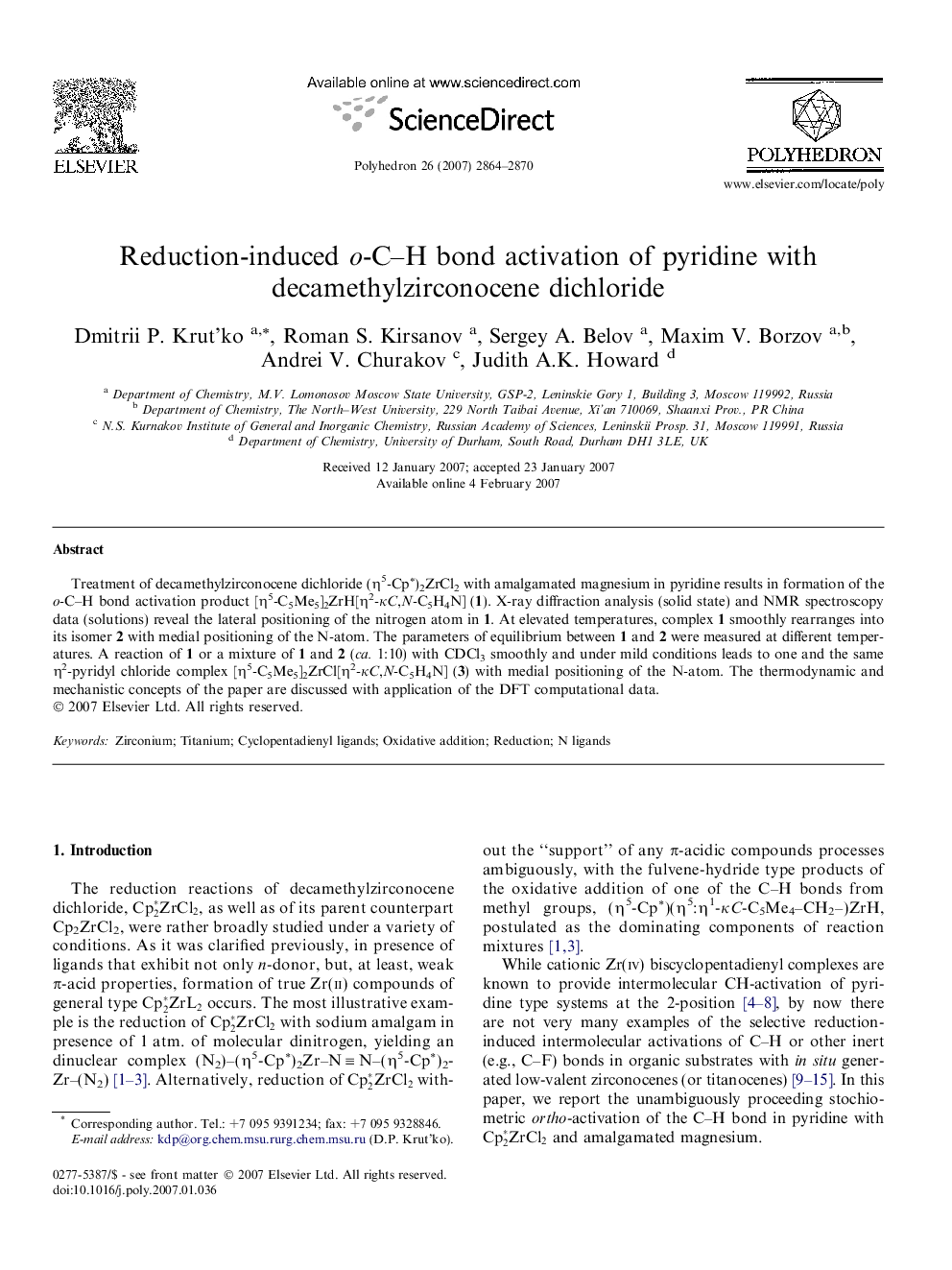| Article ID | Journal | Published Year | Pages | File Type |
|---|---|---|---|---|
| 1339848 | Polyhedron | 2007 | 7 Pages |
Treatment of decamethylzirconocene dichloride (η5-Cp∗)2ZrCl2 with amalgamated magnesium in pyridine results in formation of the o-C–H bond activation product [η5-C5Me5]2ZrH[η2-κC,N-C5H4N] (1). X-ray diffraction analysis (solid state) and NMR spectroscopy data (solutions) reveal the lateral positioning of the nitrogen atom in 1. At elevated temperatures, complex 1 smoothly rearranges into its isomer 2 with medial positioning of the N-atom. The parameters of equilibrium between 1 and 2 were measured at different temperatures. A reaction of 1 or a mixture of 1 and 2 (ca. 1:10) with CDCl3 smoothly and under mild conditions leads to one and the same η2-pyridyl chloride complex [η5-C5Me5]2ZrCl[η2-κC,N-C5H4N] (3) with medial positioning of the N-atom. The thermodynamic and mechanistic concepts of the paper are discussed with application of the DFT computational data.
Graphical abstractTreatment of decamethylzirconocene dichloride (η5-Cp∗)2ZrCl2 with amalgamated magnesium in pyridine results in the formation of the o-C–H bond activation product [η5-C5Me5]2ZrH[η2-κC,N-C5H4N] with the lateral positioning of the nitrogen atom. At elevated temperatures, this complex smoothly rearranges into its isomer with a medial positioning of the N-atom.Figure optionsDownload full-size imageDownload as PowerPoint slide
